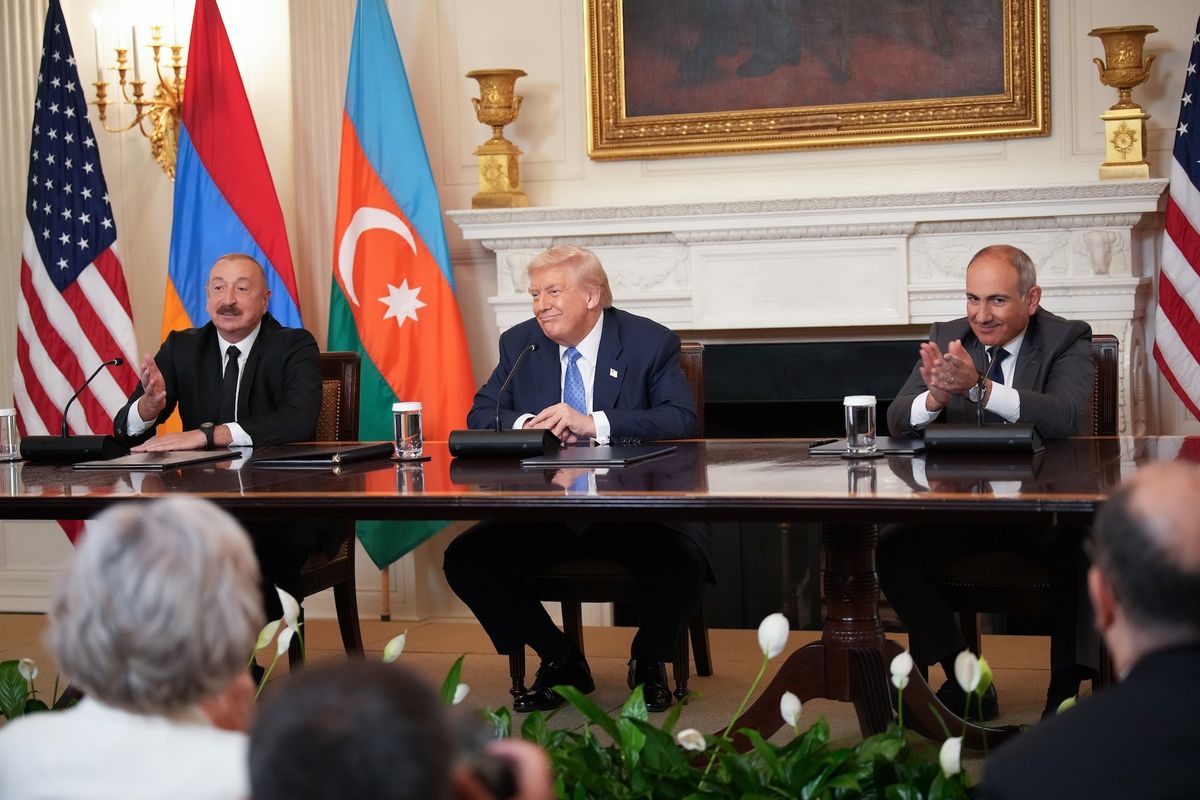PRIVATE SECTOR PERSPECTIVE — National security leaders know that adapting faster to escalating change and nation-state competition is imperative, yet how to choose the most efficient path? Focusing on unlocking and leveraging the diverse talents of people while retaining top talent is key to staying ahead of the adversary.
We see three critical areas for creating resilience: integrating innovators, empowering a hybrid workforce, and cultivating the next generation of the intelligence community (IC). None of these objectives are new, but all have complexities which make it difficult for government organizations to tackle. These goals require diverse partners and talents. The good news is, each of the below recommendations reinforces the others—and the capabilities to fuel success are available now.
First, integrate the innovators. At this moment, brilliant minds are creating tools and techniques that can accelerate IC capabilities—from activating AI at the edge to automating multi-intelligence fusion. It’s time to use the same technologies that are transforming the private sector to transform the public sector. Silicon Valley offers the advantage of fast timelines, with shorter funding cycles than the government’s formal acquisition and development process.
The IC can move forward using commercial technologies that are readily available, embedding software across mission priorities, by prioritizing access to unconventional technologies from non-traditional defense businesses. While the IC has taken steps to make acquisitions from these emerging tech companies easier, stakeholders still need support in finding, vetting, and conducting due diligence on the ones that will have the most significant impact in shaping the future battlespace.
A bridge is therefore needed from organization to invention. We’ve seen that getting IC stakeholders, technical visionaries, and partners together sparks breakthrough conversations which can then be translated to objectives, requirements, and plans—from acquisition, accreditation, and testing to full implementation. Some of the areas industry partners can enable are:
- Identifying promising technologies, both in the U.S. and among allied nations
- Mapping innovation to mission sets, from scope of work to execution
- Helping startups gain clearances, align with government policies, and speed accreditation
- Tailoring open-source, commercial solutions to integrate innovation cost-effectively
- Guiding the process to ensure built-in zero-trust security
Second, empower the hybrid workforce. The IC has access to less than 1% of the U.S. workforce—and this percentage is in jeopardy of contracting based on growth in the private sector. Meanwhile, the COVID-19 pandemic has shifted employee expectations toward remote work. To scale operations, solidify resilience, and gain timely access to cutting-edge skills, organizations need to retain employees that prefer flexible working arrangements while gaining a broader pool of talent.
To this end, many intelligence leaders have been integrating some form of a hybrid working model that enables professionals of varying clearance levels to work in a mix of secure compartmented information facilities (SCIFs) and unclassified spaces. This gives the IC the opportunity to employ the skills of professionals waiting to be fully cleared as well as top software and engineering talent that can take on unclassified work for a “develop low side, deploy high side” approach. Immersing these experts in rewarding work during the months they’re waiting to be cleared helps them engage and bond with the mission - increasing the chance of retention during this phase and beyond.
Successful IC pilots are enabling advances in areas including artificial intelligence, zero trust security, and specialized engineering. It’s a customized approach: Each organization evaluates what work is conducive to multi-class operations, and where appropriate, shapes contracts to permit such an approach.
One strategy we recommend is transitioning selected initiatives to geographically distributed SCIFs—literally opening new doors for hybrid operations. This not only lowers risks by building a more dispersed workforce but also offers the chance to plug into innovation hubs such as Austin, Seattle, and Boston. This means:
- Employees can begin work at remote locations across country and then, once cleared, commute to local SCIFs for leading-edge classified work
- Leaders can experiment with various models to see which mix of remote and compartmented work is most effective—with access to classified experts in varied regions all the while
- Operations can be rapidly scaled, strengthening resilience
Third, cultivate the next generation of intelligence professionals. It’s no news that high-tech companies offer new STEM graduates prestigious work and salaries to match—giving them a pole position in the talent wars. What’s more, the younger workforce stays in a given position, on average, just bit longer than it takes to obtain a high-level clearance. Yet in every generation, there are those who long to make a difference and are inspired by the mission to safeguard the future. These are the professionals the IC must identify and engage.
Leaders can inspire the next generation by giving them forward-looking assignments. Why not let them further critical analysis of open-source intelligence, for example—an area that becomes increasingly relevant as geopolitical events unfold? Other attractions to consider are:
- Partnerships with organizations for STEM programs, hackathons, and competitions
- Robust internship programs that allow hands-on experimentation with new tech
- Assignments to non-classified pilot programs on the leading edge of tech
The way ahead is challenging, but prioritizing key objectives simplifies the journey. And the rewards are worth it; advances in AI, cyber, edge computing, and other critical technologies can only be achieved by scaling our combined resources. We must continue to connect with diverse partners and professionals to drive the mission forward to obtain the decision advantage against our adversaries.
Read more expert-driven national security insights, perspective and analysis in The Cipher Brief















